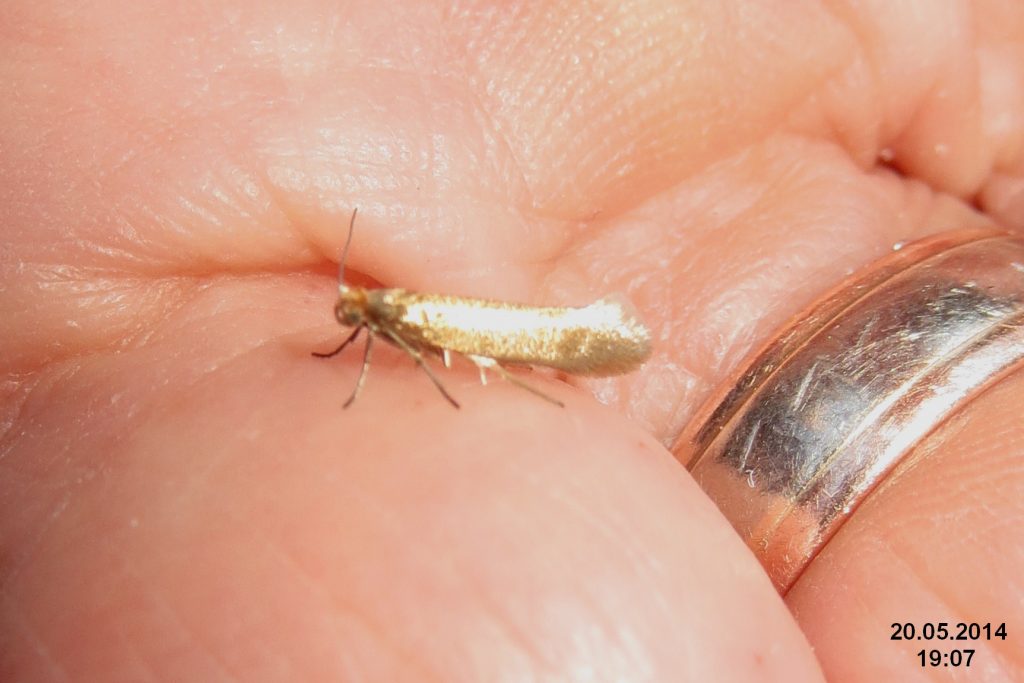Carpet moths can be an annoying and quite destructive problem whether you have them in your home or in your business. They cause significant damage to carpets, rugs, and clothes. The larvae of the carpet moth feed on the natural fabrics of these items, damaging them in the process. Wool, fur, and silk are prime targets of the carpet moth. But how do they get into your home in the first place, and what can you do to prevent them from gaining entry?
What are carpet moths?
Firstly, let’s establish what exactly these insects are:
Carpet moths are, in fact, the same as clothes moths. A carpet moth is simply a moth that eats keratin. They are attracted to keratin-rich materials such as wool, regardless of whether the keratin is in clothing, carpets, or something else.
Out in nature, carpet moths eat feathers that have fallen off birds or eat animal fur that’s been left behind. They play an important role in nature because keratin doesn’t rot easily, so thankfully we have carpet moths to help dispose of it for us.
There are more than one species of carpet/clothes moth, but the most common types here in the UK are the webbing clothes moth (Tineola bisselliella) and the Case Bearing Clothes Moth (Tinea pellionella). Both types look very similar and are hard to tell apart.

Lifecycle overview
Carpet moth eggs normally hatch into caterpillars within 4 -10 days. The tiny caterpillars will spend normally 4 – 6 months munching on keratin before they develop into a moth. Once they become a moth, they may lay 40 to 50 eggs.
Depending on the stage of the moth’s lifecycle when it enters your home, there can be quite a time lag before you have a major carpet moth problem.

How do carpet moths get into your home?
There are several ways carpet moths get into your home, as follows:
Carried in by pets
When your pets come into your home, they might have a moth egg or larva stuck in their fur or paws, depending on where they’ve been. When your pets trapse over your carpet they may be depositing that egg or grub to your carpet. This could result in a moth problem several months in the future, once the larva has become a moth and laid more eggs.
Carried in on shoes
A moth egg is the size of a grain of sand. A newly born larva is 1mm in length. If one was stuck to your shoe, you probably wouldn’t even notice. There’s not much you can do to totally prevent moth eggs or larvae from getting stuck on your shoe, but you can control where that shoe goes. Don’t walk on natural carpets with shoes. Always take off your shoes at the door and ensure they are not left lying on wool carpets or wool rugs.
Second-hand clothes or furniture
Second-hand items are always a risk because you just don’t know where they’ve been before. If the seconds have been in a premises that’s affected by carpet moths or other pests such as bed bugs, these pest problems can quickly spread into your home.
It’s best always to steam clean any second-hand furniture or clothes before they come into your home to avoid introducing an unwanted guest.
Windows and doors
Female clothes moths can’t fly. They just hop and flutter. So it’s not very likely that an egg-laden will fly in your window and start laying eggs on your expensive woollens. However, once a female caterpillar turns into a moth, she will need to mate before she can lay eggs. If you already have a female in your home, the male carpet moth would gladly fly in through an open window to mate with the female.
How worried should you be about carpet moths?
It really depends on how much wool and silk you have on the premises. If you have wool carpets for example, then you should exercise caution because wool carpets are very expensive. The same goes for woollen knitwear, silks, and furs. On the other hand, if you have very little woollen knitwear, silk, or fur and your carpets are synthetic, you will not have much to worry about.
How to prevent carpet moths from entering the house
- Restrict where pets are allowed to go – ideally, don’t let pets onto woollen carpeted areas.
- Don’t wear shoes in the house
- Wash your pets regularly
- Vacuum your carpets regularly and thoroughly with a strong suction as this will help remove eggs and larvae. Ensure you vacuum all the hard-to-reach places, too.
- Keep all woollens, silks, and furs in airtight plastic containers or bags when not used.
- Minimise the use of woollen carpets in areas close to doorways into the building from the outside.
How to stop carpet moths who are in my house from eating my carpets
Contact pest control if you have a serious problem. We’ve written a self help guide here that will help you get rid of them. Merlin Environmental can help you eliminate moth problems nationwide across both the UK and the Republic of Ireland. Click here to get in touch.

